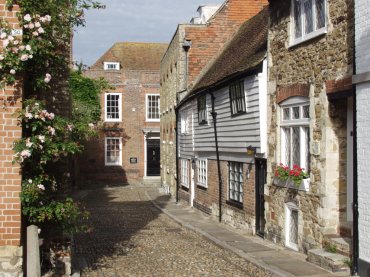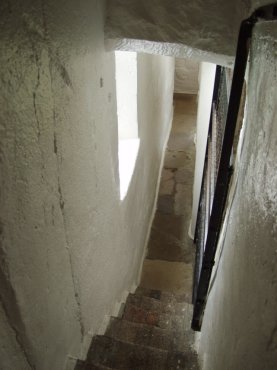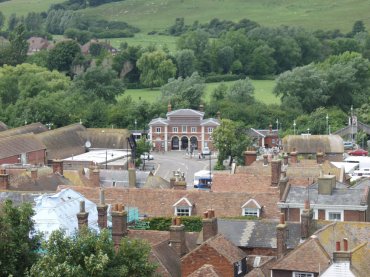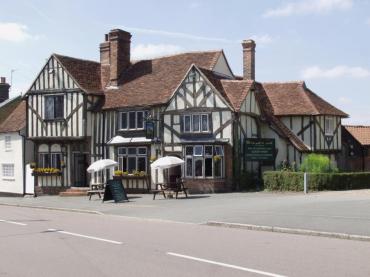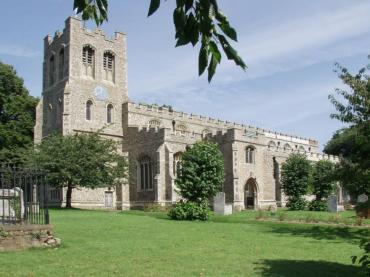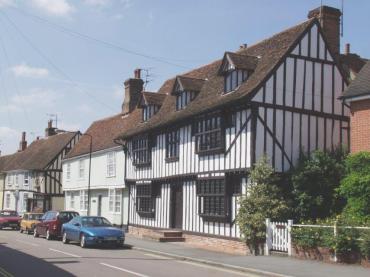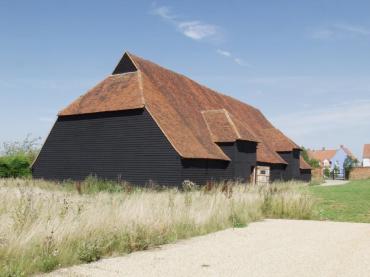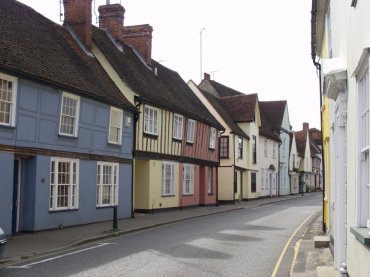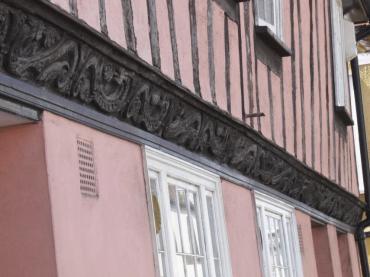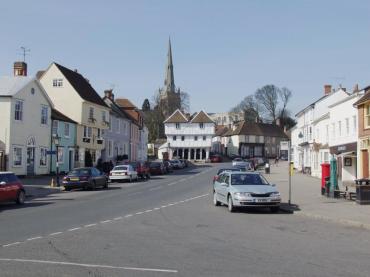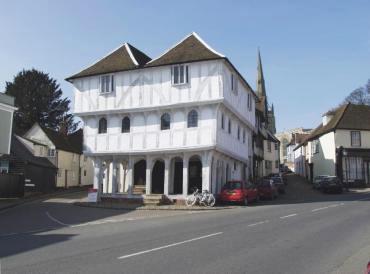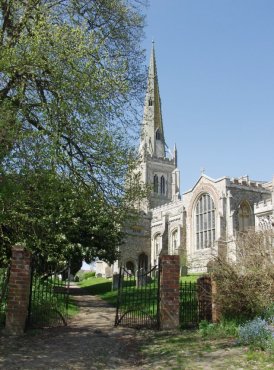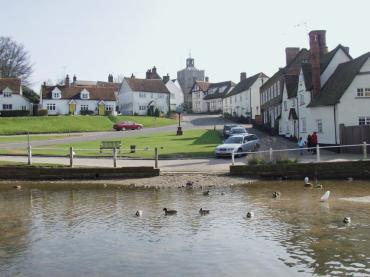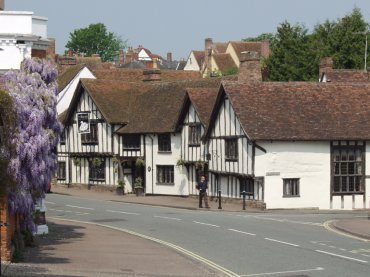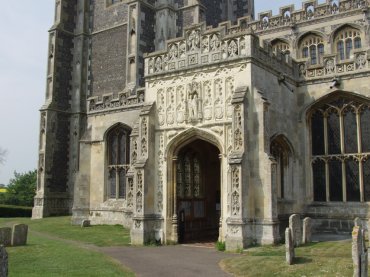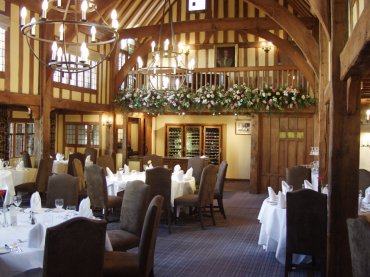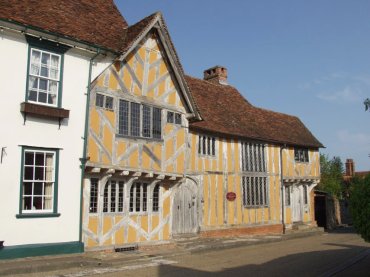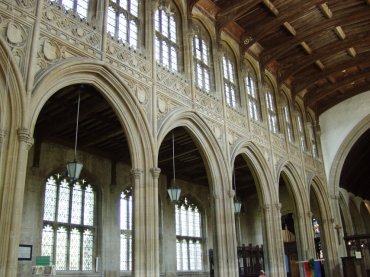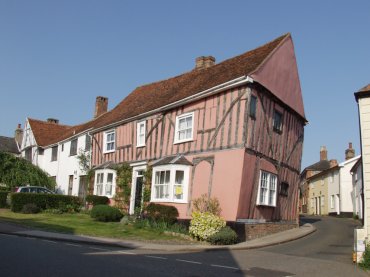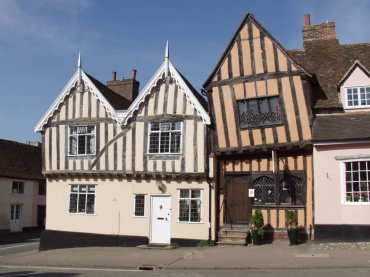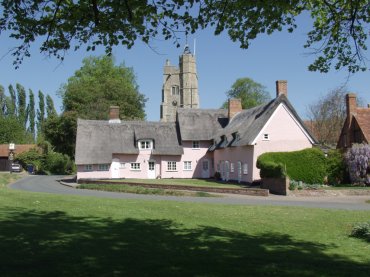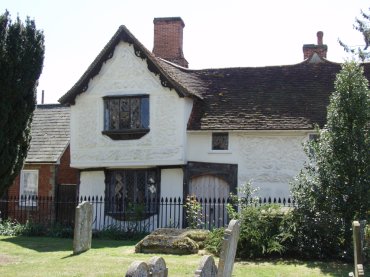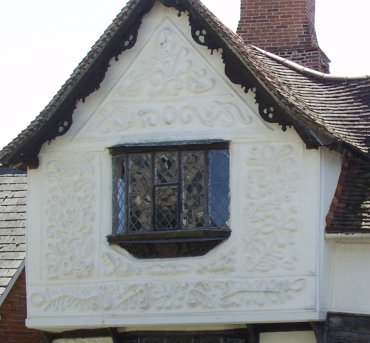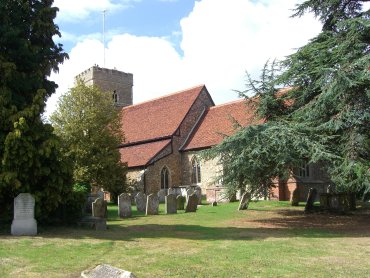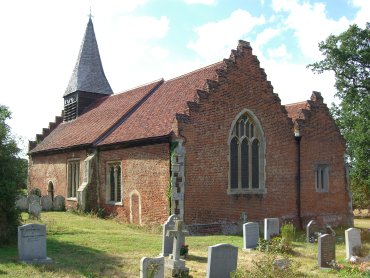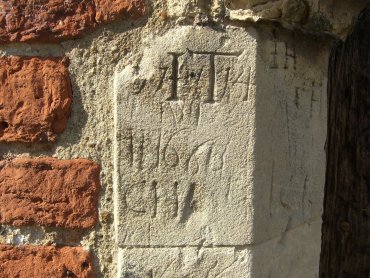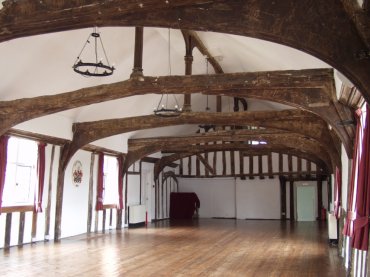Yesterday was a lovely sunny day and the back roads called. We headed north-west towards Braintree, by-passed Braintree to the north, then off west through Bocking Churchstreet. We passed by the windmill in Bocking Churchstreet, which we have visited before, and made our way through the tiny back roads passing through the villages of Panfield, Jasper's Green and Shalford Green before arriving at our first planned stop – Bardfield Saling church.
Bardfield Saling is a very small village which is approximately in the middle of nowhere and all the better for it. It has a little church, built in the first half of the 14th century, with an unusual feature – a round tower. There are only 6 churches in Essex with round towers and this is probably the last medieval church ever built in this country with a round tower.
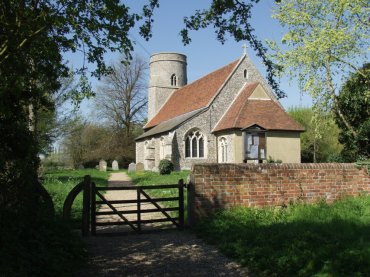
There were a number of interesting features inside including some straw platting showing extraordinary detail. We spoke to a lady in the house opposite the church who told us that the platting was done in 1880 by the mother of the previous church warden.
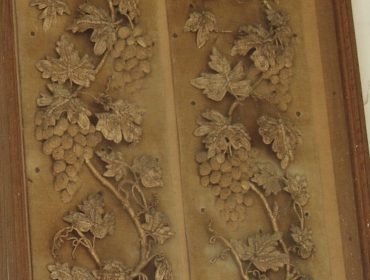
After leaving Bardfield Saling we meandered, and meander really is the only suitable description for navigating these little lanes, for a few miles to the village of Stebbing. You will not find Stebbing mentioned in any tourist literature which is surprising because it really is a pretty village. Lots of ancient buildings and a rather fine church.
The existing church dates from the mid 14th century and belonged to the Knights Hospitallers. There is nothing in the architecture to indicate that it was a Hospitallers church; it is simply a fine example of Decorated English seen here behind some cottages from outside the old Red Lion.

It was here that we saw some angels.
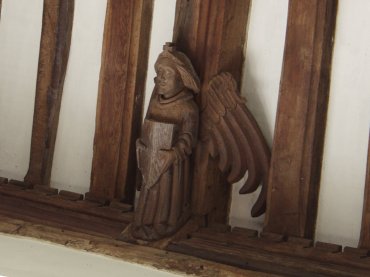
There were a pair of angels, one each side, between each of the main supporting beams of the roof structure. That, however, was not the most interesting feature of this church. It has a stone rood screen, most are made of wood, and is one of only three left in Europe. One of the other two is in Great Bardfield, of which more later, and the third is in Trondheim, Norway.
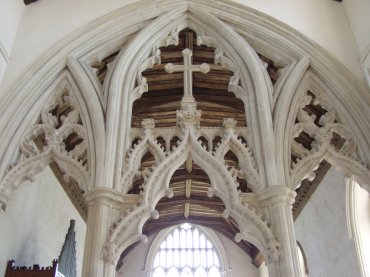
We walked back into the main part of the village along this road.

With a last look at some of the old cottages we moved on to our next destination.


Wending, or should that be winding, our way through yet more back lanes we headed for Thaxted going out through Duck End and past Porridge Hall on the way. Don't you just love those names? I don't know whether the hall has any association with Porridge or whether it's a corruption of an older name.
I stopped to take this picture on our approach to Thaxted because the little town looked so nice nestling in it's valley. You can't really miss the church and the windmill can you?
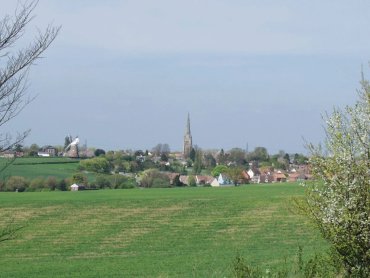
We arrived at Thaxted in time for lunch. There are three tea rooms in Thaxted that we know of. One, which is Egon Ronay recommended, had apparently closed down and of the other two in the main street opposite the Guildhall we chose the one called "Parrish's". Amanda had fish and chips and I had omlette and chips which was fine and the only comments that I would make are that the meals arrive on plates the size of manhole covers, I couldn't finish all mine, and the 'background' music was a bit too foreground for me – too loud.
However, thoroughly fortified, we sallied forth to explore. We have been to Thaxted before but there were some parts we had not explored. We walked up Stoney Street which leads from the Guildhall up to the churchyard.

Through the churchyard past the Alms Houses and along the footpath to John Webb's Windmill.
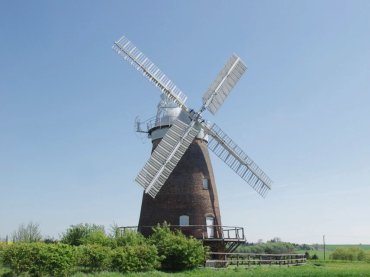
This is a conventional tower mill built in 1804 using local materials. The bricks being made and fired locally using clay from a local pit. The windmill is fully restored and is now in full working order and capable of grinding flour.
Back along the footpath running alongside the churchyard we headed into the town centre.
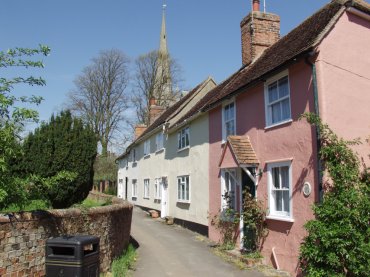
Back to the car and off to our next destination – Little Bardfield Church next to Little Bardfield Hall. Somewhere between Thaxted and Little Bardfield we go past Furthermore Hall and I don't know where that name comes from either. The little church of St Katharine's at Little Bardfield dates from 1042 which means that, in case you can't work it out, it is a Saxon church. The tower really does look quite large for such a small church.

Onward for one and a half miles to Great Bardfield. Great Bardfield was at one time a small market town but is now a village that retains some of the trappings of its erstwhile importance, for example, a 'Town Hall'.
We parked in the High Street near the the war memorial and this view is from the war memorial looking down Brook Street which was the road we used to get to the church.

There are some nice ancient buildings here from the medieval period onwards as evidenced by this large thatched cottage. It is particularly interesting because a small part of the roof at the front is tiled.
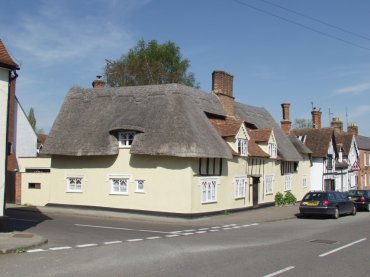
Further along we went past the green, with its colour-washed houses, towards the church.
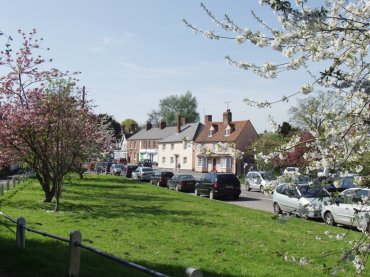
The 14th century church is interesting for a number of reasons. One is that the lower part of the tower is actually Norman.

Another reason is the stone rood screen. This is late 14th century whereas the one we saw in Stebbing is mid-14th century. So now you've seen two out of the three remaining stone rood screens in Europe. If you want to see the third you'll have to pop over to Norway.

This is yet another reason, should you need one; one of two elaborately carved chancel tie-beams including the date of 1618.

Leaving Great Bardfield we head for Finchingfield where we arrive in time for afternoon tea with scones, butter and jam. Yum! On a previous visit we went into the Causeway Tea Rooms but they are closed each Thursday and Friday so we went into Jemima's Tea Rooms, near The Fox Inn, instead. Good tea and coffee – lovely scones!
Finchingfield, like Thaxted, is already featured on the web site but we wanted another look around and there is always the chance of a different view like this one

We wandered across to the windmill which is the smallest post mill in Essex dating from the 1700s.

This is part of the village near the windmill.

.. and so we headed home after another long, sunny and interesting day. Some of these places will, in time, appear on the web site with their own pages.

